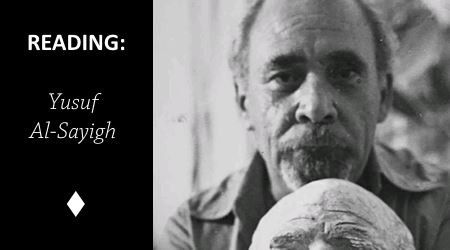Yusuf al-Saigh (1933-2006) was an Iraqi poet who has published poetry since the 1950s. He also worked as an illustrator and painter. I read a short verse that nicely renders the working of symbolic authority:
Between the Sultan and His Statue
A wily sculptor
Cut several pounds off the sultan’s figure
And added several pounds to the statue’s.
When day broke,
The people said:
We’ve been taken in!
Of the two bodies on the veranda,
We no longer can tell
Which one is the Statue
And Which is the sultan

The image of the torn down statue of Saddam Hussein is part of our collective memory and surely makes his poem’s metaphor more effective. What did the wily sculptor actually do? Make the sultan’s statue look more realistic by adding several pounds of belly, thereby illustrating the idea that the sultan himself is a mere mortal, running the risk of obesity like most of us. So the sultan loses his face, or figure (here I concede my free interpretation, I am not aware of the connotations in the original).
Statue and sultan get confused at daybreak, so the people feel fooled. Sultanhood requires that absolute authority is associated with the one figure of the sultan himself. The statue cast in his honor can fulfill every symbolic function of sultanhood: subjects can worship the statue like they would the real person – except for the function of absolute authority that can’t be distributed. As soon as the people doubt the individuality of the sultan, that authority vanishes, because the collective imagination, or hallucination, is robbed of the focal point that made it possible.
It seems self-evident to me that in our intellectual pursuit of a better life, we should all aspire to be wily sculptors.

One thought on “Reading: Between the Sultan and His Statue by Yusuf al-Saigh”
Comments are closed.